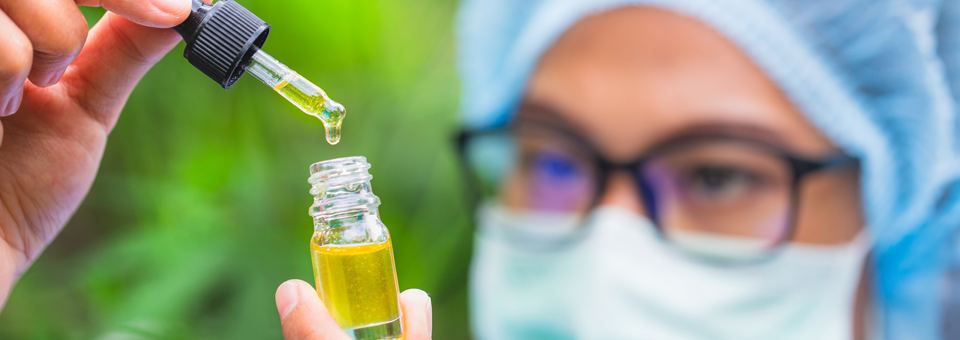The recovery rate from Covid-19 is about 99.75%. Fortunately, most people who have had it won’t have any long-lasting damage.
Unfortunately, in about 5% percent of critical cases, the virus triggers an overreaction of the immune system in what is known as a “cytokine storm.”
This leads to inflammation that can damage the walls and lining of the air sacs in your lungs.
The result is acute respiratory distress syndrome – or ARDS.
But there’s a novel way you can protect your lungs.
A new study published in the Journal of Cellular and Molecular Medicine found that CBD can reduce – and even reverse – this lung damage by normalizing levels of an inflammation-causing peptide called apelin.
Apelin is made by cells in the blood, brain, heart, fat and lung tissue. It plays a major role in regulating your blood pressure, while also keeping inflammation down.
When you’re infected with coronavirus, your levels of this peptide plummet. But researchers say that even when levels were close to zero in patients with ARDS, treatment with CBD increased apelin blood levels by 20 times – and restored lung function back to normal levels.
The study authors found that using CBD also:1
- Relaxed cells lining blood vessels
- Reduced excessive lung inflammation
- Increased oxygen levels
- Repaired damage to the lungs, including scarring and swelling
This study backs up an earlier study that found CBD helps open bronchial passes allowing patients with COPD to breathe more easily and avoid low blood oxygen levels.2
Heal your lungs with the right kind of CBD
When it comes to CBD, you want to get the greatest – and fastest – benefit. And that means increasing its bioavailability.
Like most medications and supplements, it’s best to take CBD with a meal because it increases the absorption. And the more
CBD you absorb in your bloodstream, the more potent the effect.You know CBD can be taken a lot of different ways: in tinctures, capsules, vaping, balms, edibles and more. Each method has benefits, but some allow for more CBD to be directly absorbed than others.
For example, eating or swallowing CBD requires digestion, which means some of the CBD gets broken down by your liver before circulating into your bloodstream.
Tinctures, on the other hand, get absorbed more quickly into your bloodstream under your tongue.
I’ve found that an oral spray that uses nanotechnology is the most bioavailable. That’s because it’s a quicker, more direct route to the bloodstream, and it avoids the liver’s “first pass” effect, which lowers CBD bioavailability.
In fact, nanotechnology gets 1,500% more CBD past your cell membranes.3 When you’re having trouble with your lungs, that’s pretty important.
To get maximum benefit, spray the liquid under your tongue, hold it without talking for 60 seconds and then swallow.
3 more ways to increase bioavailability
- Look for an emulsified product. Some products emulsify their CBD using nanotechnology. This breaks CBD down into even smaller molecules. The smaller and more dispersed the molecules are, the more bioavailable they are, because they pass more easily through cell membranes and into the bloodstream than larger CBD particles.4
- Take it with healthy fats. CBD is a fat-soluble compound, meaning it dissolves in fats. This breaks CBD down into smaller molecules that are more easily absorbed by the body. One way to increase CBD’s bioavailability is to mix it with a healthy high-fat snack or meal. A recent study found that people who took CBD with high-fat foods increased their absorption up to 14 times more than those who took it on an empty stomach.5
- Look for full-spectrum CBD. Terpenes are fatty oils found in the essential oils of almost all plants. They occur naturally in hemp and are extracted along with CBD and other compounds to create full-spectrum CBD products. These compounds work together and amplify each other’s benefits, a synergy known as the “entourage effect.” Terpenes increase CBD bioavailability and enhance the therapeutic effects of cannabinoids.
Note: There is one method of taking CBD I don’t recommend and that’s vaping. That’s especially true if you already have lung damage. It’s true that there aren’t a lot of studies. But with so many other safe, effective and fast ways to get your CBD, why take the risk?
To Your Good Health,

Al Sears, MD, CNS
1. Khodadadi H, et al. “Cannabidiol modulates cytokine storm in acute respiratory distress syndrome induced by simulated viral infection using synthetic RNA.” Cannabis Cannabinoid Res. 2020; 5(3): 197–201.
2. Makwana R, et al. “The effect of phytocannabinoids on airway hyper-responsiveness, airway inflammation, and cough.” J Pharmacol Exp Ther. 2015 Apr;353(1):169-80.
3. Cherniakov I, et al. “Piperine-pro-nanolipospheres as a novel oral delivery system of cannabinoids: Pharmacokinetic evaluation in healthy volunteers in comparison to buccal spray administration.” J Control Release. 2017;266:1-7.
4. Bruni N, et al. “Cannabinoid delivery systems for pain and inflammation treatment.” Molecules. 2018;23(10).
5. Birnbaum AK, et al. “Food effect on pharmacokinetics of cannabidiol oral capsules in adult patients with refractory epilepsy.” Epilepsia. 2019;60(8):1586-1592.

